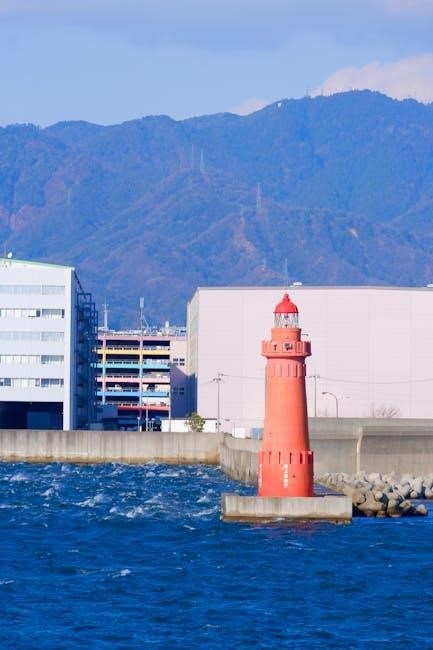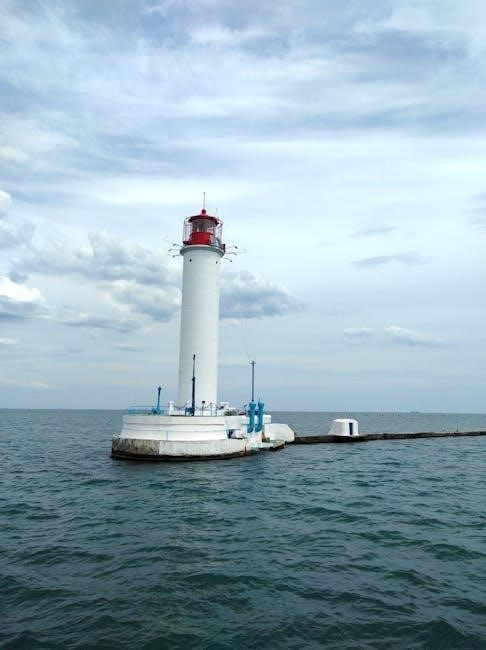Identify common issues like no heat, strange noises, or foul odors. Regular maintenance and checking filters, thermostats, and condensate pumps can prevent major breakdowns and extend system lifespan.
Understanding Common Issues

Identifying common water furnace issues is essential for effective troubleshooting. Homeowners often encounter problems like no heat, strange noises, or foul odors in hot water. These issues can stem from faulty components or improper maintenance. Understanding the root causes, such as clogged filters, thermostat malfunctions, or limescale buildup, helps in addressing them promptly. Regular checks of the furnace filter, thermostat settings, and condensate pump can prevent major breakdowns. Strange noises, like clanking or hissing, may indicate worn parts or gas leaks, requiring immediate attention. Foul odors in water often point to bacterial growth or sediment buildup, which can be resolved with proper cleaning and maintenance. By familiarizing yourself with these common issues, you can take proactive steps to ensure your water furnace operates efficiently and safely throughout the year.

Common Water Furnace Problems
No heat, strange noises, and foul odors are frequent issues. These problems often result from clogged filters, thermostat malfunctions, or internal component failures, requiring prompt attention to ensure functionality and safety.
No Heat or Furnace Not Running
If your water furnace isn’t producing heat or won’t start, begin by checking the thermostat. Ensure it’s set to the “Heat” mode and the temperature is higher than the current room temperature. Verify that the thermostat has working batteries or power. Next, inspect the circuit breaker or fuse box to confirm the furnace has electricity—a tripped breaker or blown fuse could be the culprit. A dirty furnace filter can also restrict airflow, causing the system to shut down. Replace or clean the filter if necessary. If these steps don’t resolve the issue, it may indicate a more serious problem, such as a faulty igniter, malfunctioning gas valve, or issues with the heat exchanger. In such cases, professional assistance is recommended to ensure safety and proper repair. Regular maintenance can often prevent these issues from arising.
Strange Noises from the Furnace
Unusual noises from your water furnace can indicate underlying issues that need attention. Common sounds include rattling, clanking, or shrieking, which may signal a loose belt, worn motor, or damaged blower. A gurgling or bubbling noise could point to issues with the condensate drainage system or limescale buildup in the heat exchanger. If the furnace hums but doesn’t start, it might be a faulty igniter or capacitor. Addressing these noises promptly is crucial to prevent further damage. Start by turning off the power and inspecting the belt for wear or misalignment. Check the condensate pump and drainage line for blockages. If the problem persists, contact a professional to diagnose and repair internal components like the motor or heat exchanger. Ignoring these noises can lead to costly repairs or system failure.
Foul Odor in Hot Water
A foul odor in your hot water, often resembling rotten eggs, can be unsettling and indicate an issue with your water furnace. This smell is typically caused by the presence of hydrogen sulfide gas, which is produced when bacteria in the water react with sulfur compounds or magnesium anodes in the system. Over time, this can lead to corrosion within the furnace. To address this, flush the water heater to remove sediment and bacteria buildup. Replace the magnesium anode with an aluminum or zinc version to reduce sulfur odors. Additionally, ensure proper ventilation to prevent gas accumulation. If the issue persists, consider installing a water filter to remove impurities and minerals contributing to the odor. Regular maintenance and inspections can help prevent this problem from recurring.
Key Components to Check
Inspect the furnace filter, thermostat, and condensate pump to ensure proper airflow, temperature regulation, and drainage, addressing common issues before they escalate into major problems.
Furnace Filter and Airflow Issues
A dirty or clogged furnace filter is a common cause of reduced airflow, leading to inefficient heating and potential system shutdown. Regularly inspect and replace the filter to ensure optimal performance. Poor airflow can also be due to blocked vents or ductwork, which should be checked and cleared to maintain proper circulation. If airflow issues persist, it may indicate a larger problem with the furnace’s blower motor or duct system. Addressing these problems early can prevent more severe damage and keep your water furnace running efficiently.
Thermostat Settings and Functionality
Ensure the thermostat is set to the “Heat” mode and the desired temperature is higher than the current room temperature. If the thermostat uses batteries, check for replacements to avoid malfunction. Programmable or smart thermostats may require software updates or recalibration. Incorrect settings can lead to the furnace not running or inconsistent heating. Verify that the thermostat is properly connected to the furnace and that all wires are secure. If issues persist, consider upgrading to a modern thermostat for better compatibility and efficiency. Always refer to the thermostat’s manual for specific troubleshooting steps, as different models may have unique features or requirements.
Condensate Pump and Drainage
The condensate pump and drainage system are critical for removing excess moisture generated by the water furnace. Ensure the drain line is not clogged or kinked, as this can cause water buildup and system shutdown. Check for proper installation and alignment of the condensate pump to prevent malfunction. If the pump fails, the furnace may not operate correctly, leading to reduced efficiency or complete shutdown. Regularly inspect the drainage system for mineral buildup or blockages, especially in hard water areas. If you notice water leaks or pooling around the furnace, address the issue immediately to avoid damage. Always refer to the manufacturer’s guidelines for specific maintenance recommendations, and consider professional servicing if the problem persists.
Advanced Troubleshooting Steps
Inspect for limescale buildup and check the heat exchanger for damage or corrosion. These steps ensure efficient operation and prevent costly repairs by addressing underlying issues early.
Checking for Limescale Buildup
Limescale buildup is a common issue in water furnaces, particularly in areas with hard water. Over time, mineral deposits can accumulate inside the heat exchanger and pipes, reducing efficiency and increasing energy bills. To check for limescale, turn off the power and water supply to the furnace. Carefully remove the access panel and inspect the interior components. If you notice a white, chalky substance on surfaces, it indicates limescale accumulation. Use a descaling solution or vinegar to clean the affected areas. Regular maintenance, such as annual descaling, can prevent severe buildup and ensure optimal performance. Additionally, installing a water softener can help mitigate this issue in the long run.
Inspecting the Heat Exchanger
The heat exchanger is a critical component of your water furnace, responsible for transferring heat from the geothermal fluid to the water. Over time, it may develop cracks or corrosion, leading to inefficiency or system failure. To inspect the heat exchanger, shut off the power and water supply. Locate the exchanger, typically found near the furnace’s core. Visually examine the surface for any signs of damage, such as cracks, rust, or mineral buildup. Use a soft brush to gently remove any debris or sediment. If you identify significant damage, contact a professional for repairs or replacement. Regular inspections can help prevent costly issues and ensure the system operates safely and efficiently. Always follow safety guidelines when handling electrical or water components to avoid accidents.

Preventive Maintenance Tips
Regular inspections, filter cleaning, and professional servicing ensure optimal performance. Schedule annual checks to prevent breakdowns and extend the lifespan of your water furnace system effectively.
Regular Checks and Professional Servicing

Regular maintenance is crucial for maintaining water furnace efficiency and preventing breakdowns. Start with simple checks like inspecting filters, ensuring proper airflow, and cleaning components. Annual professional servicing by a certified technician can identify hidden issues before they escalate. This includes checking the heat exchanger, condensate pump, and thermostat functionality. Professionals can also address limescale buildup and ensure the system operates safely and efficiently. Additionally, schedule regular inspections of water flow and antifreeze levels, especially in geothermal systems. Keeping the area around the furnace clean and ensuring proper ventilation can also prevent common issues. By combining DIY checks with professional servicing, you can extend the lifespan of your water furnace and avoid costly repairs. Consistency is key to maintaining optimal performance and reliability.
